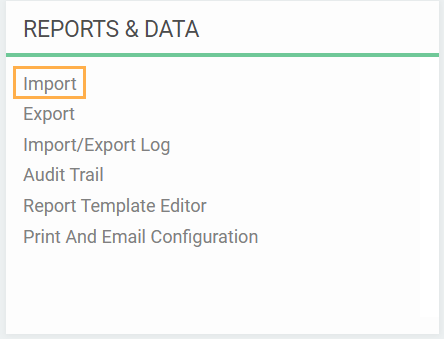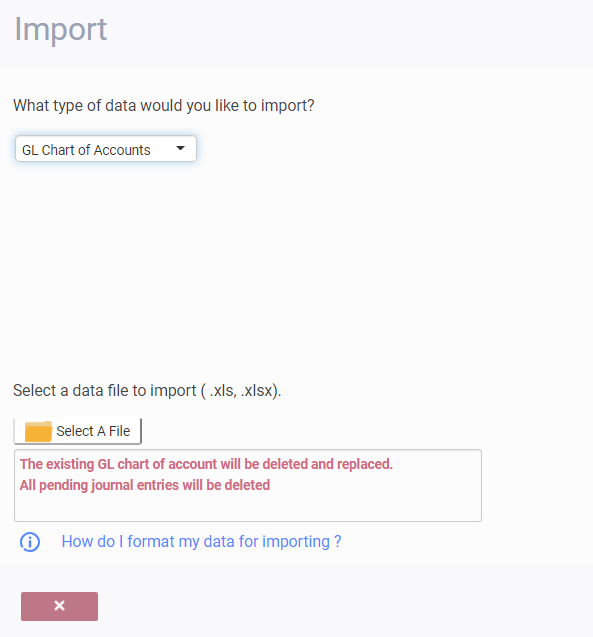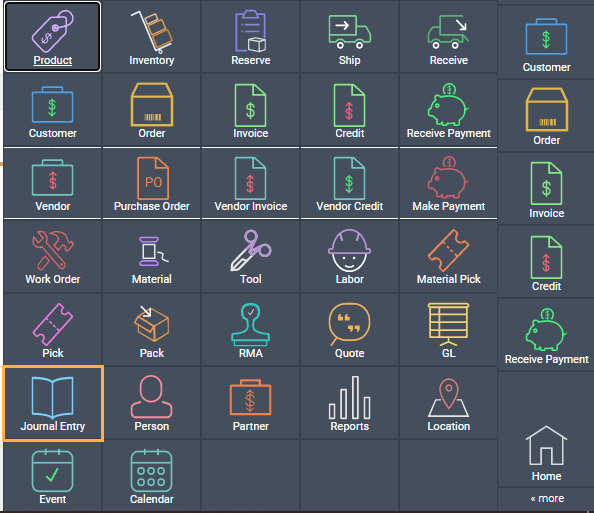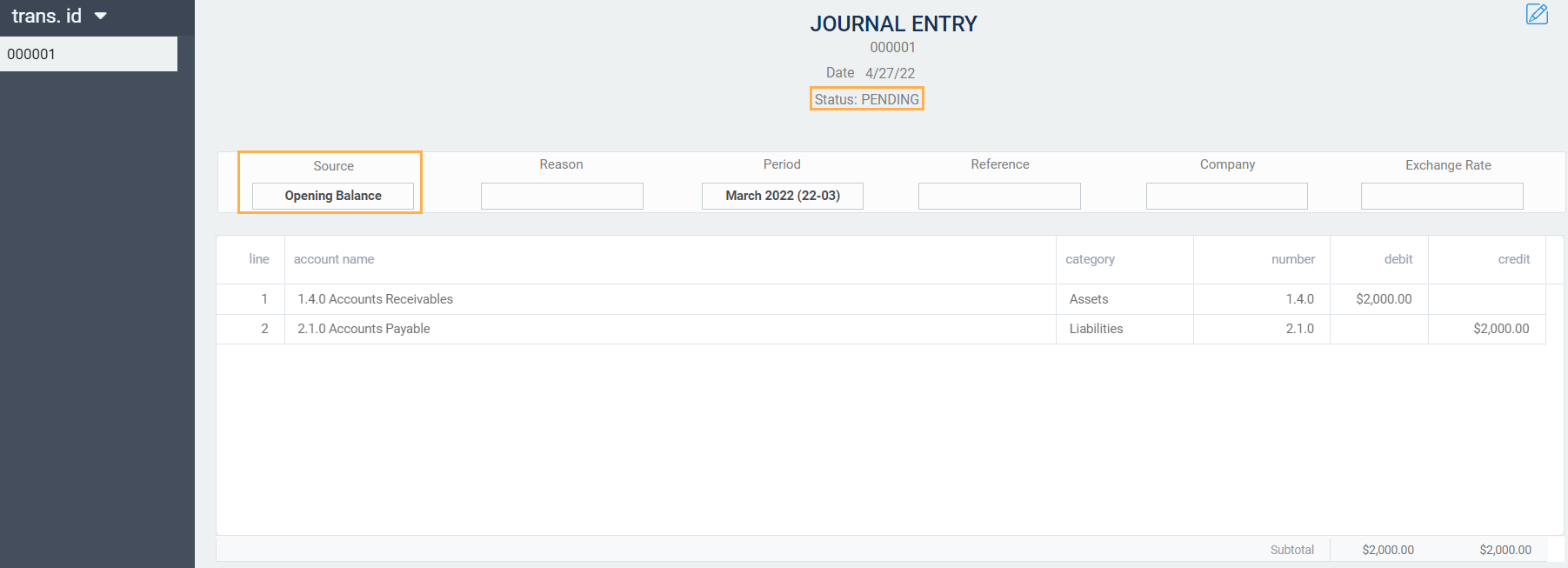Importing GL opening balances into Paragon
Introduction
In this article, we'll show you how to import your general ledger opening balances for the beginning of your fiscal year.
Important notes before you begin
Before importing your GL accounts - make a copy of your existing GL accounts and setup. The import will replace your existing GL settings. We recommend that you go settings/gl setup, and make screen shots of all your current GL link setup screens before importing your new GL accounts, so that you can reset your GL links using the new GL accounts.
Before importing your opening balances, make sure you have your GL periods setup in Paragon.
Fill in your template
The first thing you're going to want to do is fill in the GL chart of accounts excel template that you've exported from ParagonERP.
ParagonERP comes with a standard chart of accounts, but you can override the default accounts by importing your own.
After exporting your GL Chart of accounts from Paragon, you'll see a template similar to the following:

glaccountID
You can start by removing the values in the first column. In this column, you'll enter the title of your account.
parentID
The second column tells the system what parent account the specific sub accounts belong to. In our export above for example, the asset account is the parent account of cash. Likewise, cash is the parent account of bank, and so on.
category
The category column tells the system what main type of account (assets, liabilities, or equity) the specific account belongs to. For example, although bank might be a sub account to cash, and cash might be a sub account of assets, all of these accounts; bank, cash, and assets, belong to the asset category.
number
This column is where you enter your account number. If you do not have any, you can create them, or use Paragon's standard numbering.
You can tell which sub accounts belong to which parent accounts by looking at the account numbers.
For example, here we know that account bank belongs to parent account cash, not only by looking at the parentID column, but also by looking at the account number.
Cash 1-0
Bank 1-0-1-0
The sub account will have the same first digits as the parent account.
summary account
The only thing that needs to be in this column is the retained earnings, and net income accounts.
accountingMethod & name
For the purpose of importing your opening balances, you don't need to add anything in these columns.
status
Make sure that all of the accounts you are importing with a balance are Active status. Make sure the first letter is capitalized, as the template is case sensitive. If you wish to import accounts, but you do not want them activated, type Inactive in the appropriate cells.
accessibleAsANonTradeItem
Each GL account has an accessible as a non-trade item attribute that determines whether the account will show up in the list of non-trade items.
GLBalance
You need to fill this column in with the appropriate debit or credit amounts in the appropriate accounts.
To do so, enter the debit amounts as positive numbers, and the credit amounts as negative numbers.
GLPeriod
This will be listed as the GL period you're importing for.
Of course, before importing your opening balances, make sure you have your GL periods setup in Paragon.
Import your opening balances
Once you've entered in your accounts, filled in your GL balances, and verified that all information in the sheet is correct, go ahead and import your opening balances.
For simplicity, we've added $2,000 as a debit to accounts receivables, and $2,000 as a credit to accounts payable.

To import the balances, make your way to the settings screen. Select import from the reports & data card, and select GL chart of accounts as what you want to import. Select your file, and click upload.



You'll notice a message in red upon importing your opening balances. This states that whatever accounts are currently in Paragon will be overridden by the accounts you are now importing.
If you've already posted your chart of accounts to the journal, or if you already have any system generated journal entry postings, you cannot override the chart of accounts. You can manually add accounts, but you cannot override accounts that have already been posted to the journal.
Post your opening balances
Once you've successfully imported your opening balances, make your way to the journal entry module to review them.
You can see that the opening balances will be listed as journal entry #000001, and it will be in pending status.
Pending status implies that you can still import a new GL chart of accounts. Think of it as a safety feature in case there are errors. As long as no journal entries are posted, you can import a new GL chart of accounts.
Once you've made sure all the information in the opening journal entry is correct, you can go ahead and post the journal entry.
What's next?
Now that you've posted your opening balance, check out your financials reports:
![paragon logo-1.png]](https://support.paragon-erp.com/hs-fs/hubfs/paragon%20logo-1.png?height=50&name=paragon%20logo-1.png)


